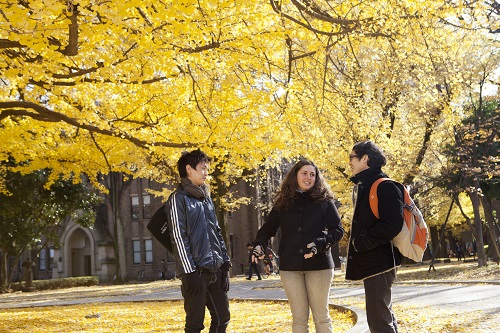Gifted American Photographer Documents Grandeur, Plight of Mali’s Fabled Timbuktu

Timbuktu is a city that has long gripped the Western imagination. It sits on the Niger River, that clearly marked dividing line between the sandy deserts of North Africa and the green, moist, fertile lands of tropical and sub-tropical Africa, the iconic jungles we associate with Congo and a blazing equatorial sun.
Timbuktu is also rooted deeply in the English language. Even young children speak of Timbuktu in the sense of “as far away from where I am now as it is possible to get.” And some of its charm, too, derives simply from the euphony of the word: “Timbuktu” slips off the tongue. We also speak definitively of “Sub-Saharan Africa” as though that were itself a name. Is that not an odd thing to do? Would we ever call the United States and Mexico “Sub-Canadian America”?
Timbuktu has an importance belied by its geographic isolation because it has served now for millennia as the doorway between the deserts and the jungles of Africa. It is the passage that one had to walk through, when camels and canoes were the principal vehicles of African travel, to get from North Africa to Sub-Saharan Africa — and back again. It maintained that role well into the 20th century, and it maintains it still today, at least symbolically.
Because of its critical position as the gateway to the south, Arab traders and evangelists from the seventh and eighth centuries onward made Timbuktu a way station of very special significance. Its two principal mosques are magnificent works of architecture, and Timbuktu’s Islamic libraries have been compared in stature to those of Baghdad and Cairo.
Though it has been no stranger to conflict over the centuries, Timbuktu today is in acute, grave danger, a sort of danger it has not faced before. Timbuktu may actually risk being destroyed because Islamic militias are battling over the surrounding territory and the very city itself.
These militias, with fanatical zeal, have already damaged ancient tombs which commemorate the final resting place of Sufi saints, now deemed to be “idolatrous” by Ansar Dine, an extremist group. A dozen sacred tombs have already been vandalized.
Worse, Timbuktu’s ancient libraries, housing priceless collections of ancient Islamic texts that the UNESCO World Heritage Center estimates may number 300,000, (including books on early Islamic studies of mathematics and science — the treasure trove is not limited to religious tracts), are now at risk of being burned or destroyed.
These priceless texts cannot be replaced. Some of them exist solely as one-time, unique calligraphy on scrolls. Destroy the single copy in Timbuktu and there are no sister copies in Cairo or Baghdad to preserve its intellectual content. Though some manuscripts have been moved to safer repositories, too many remain in Timbuktu, where imams have preserved them for centuries. But the imams have never faced the threat they face today.
And yet these books and scrolls could be saved both in actuality and as digital copies — if there was a will and a way expressed by the greater international community that made this a focus of global concern. Part of the problem is that the calamity facing Timbuktu is not widely known in Europe and America.
And now comes a brilliant young American photographer and writer, Alexandra Huddleston, who has given a substantial portion of the last eight years of her life documenting, in magnificent images and moving words, the dire threat that faces Timbuktu, both its living people and its living treasures. She has put all her work into a book, a volume that will hold you prisoner.
Her 96-page text is titled “333 Saints: a Life of Scholarship in Timbuktu” and it tells the story of a city under siege — there is no less blunt way to put it — by Islamic fanatics who think nothing of killing people and less of killing texts. Supported in part by her Fulbright, Alexandra Huddleston tells in photographs and words the story of Timbuktu’s long lineage of Islamic scholarship, and of how that scholarship is now imperilled as never before.
In a short piece she wrote for the development group Kickstarter, Huddleston says that her book “tells a story of discovery, a rich and beautiful African intellectual culture that remains largely unknown in the West. It is a book about men and women who love books — scholars of all ages who seek knowledge and wisdom through learning. It is about a city that has built its identity around a culture of scholarship.”
Alexandra Huddleston is a native of Africa, the daughter of Foreign Service parents then stationed in Sierra Leone. Though she spent time growing up in Washington, D.C., she has traveled extensively all over the world and she fell in love with Mali, that mysterious home to so many elegant peoples that is so deeply hidden in the southern Sahara, a nation that gently touches, too, in its southern precincts, Africa’s moist, green lushness.
Alexandra was introduced to Mali by her mother Vicki Huddleston, who had two tours of duty at the U.S. Embassy in Mali, first as a staffer in the political and economic section early in her career and later as ambassador. Vicki Huddleston began her overseas journeys as a young Peace Corps volunteer in Peru, so Alexandra’s affection for remote and difficult places appears to be deep in her DNA.
Alexandra Huddleston’s work “333 Saints: a Life of Scholarship in Timbuktu” must be approached by American and European readers with a sense of urgency, for there is a real risk of cultural extinction here, the permanent loss of treasures that help inform us of who we are. There are scientific treasures here, too, dating from that period when Islamic science eclipsed the backward European scholarship of the Middle Ages.
Many in this country were aghast when the Taliban destroyed the Buddhas of Bamiyan in central Afghanistan a dozen years ago, using precisely the same “logic” (that they are idolatrous) now being directed against Timbuktu’s Sufi saints and Islamic libraries.
But what is happening in Timbuktu is arguably much worse, because manuscripts encode vastly more human thought, history, emotion, and knowledge than stone statues are capable of doing. Where is the sense of outrage that is now needed?
Anyone who loves Africa will cherish this book. And by focussing attention on the dire predicament in Timbuktu, perhaps a solution can be found that will preserve this human heritage for those who come later, who may treat these treasures more wisely.
Read more about Alexandra Huddleston and her “333 Saints: a Life of Scholarship in Timbuktu” at:
http://www.alexandrahuddleston.com
Buy the book at:







